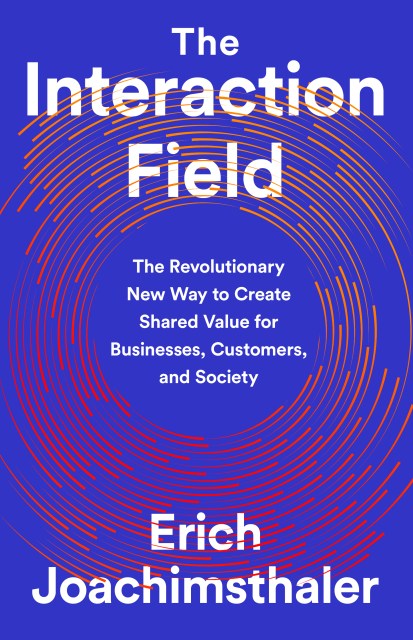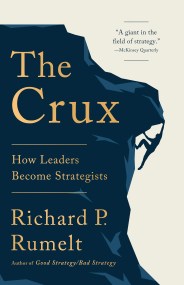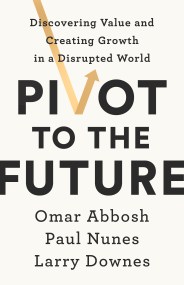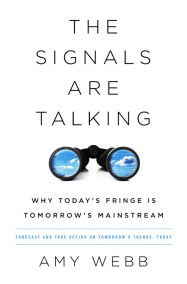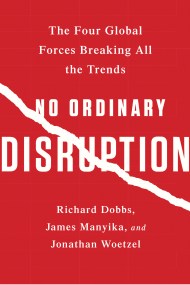Promotion
Use code MOM24 for 20% off site wide + free shipping over $45
The Interaction Field
The Revolutionary New Way to Create Shared Value for Businesses, Customers, and Society
Contributors
Formats and Prices
Price
$17.99Price
$22.99 CADFormat
Format:
- ebook $17.99 $22.99 CAD
- Hardcover $28.00 $35.00 CAD
- Audiobook Download (Unabridged)
This item is a preorder. Your payment method will be charged immediately, and the product is expected to ship on or around September 15, 2020. This date is subject to change due to shipping delays beyond our control.
Also available from:
Learn how the most successful businesses are creating value and igniting smart growth in a fast-paced, competitive market.
Most businesses today focus on competition and disruption instead of collaboration, participation, and engagement. They focus on transactions instead of interactions. They seek to optimize or extract value rather than share it. They build assets and thrive on enormous scale, huge distribution networks, and brand recognition. But then along comes a rival that doesn’t care much about your brand and your other assets, and it either rushes past you or mows you down.
In The Interaction Field, management expert and professor Erich Joachimsthaler explains that the only way to thrive in this environment is through the Interaction Field model. Companies who embrace this model generate, facilitate, and benefit from data exchanges among multiple people and groups — from customers and stakeholders, but also from those you wouldn’t expect to be in the mix, like suppliers, software developers, regulators, and even competitors. And everyone in the field works together to solve big, industry-wide, or complex and unpredictable societal problems.
The future is going to be about creating value for everyone. Businesses that solve immediate challenges of people today and also the major social and economic challenges of the future are the ones that will survive and grow.
Genre:
-
"A thrilling new way of looking at a successful business model for the future. This fascinating book contains great business stories-such as LEGO, John Deere, Alibaba, Flatiron Health, and more-as well as important thinking today's CEOs should become familiar with."Vijay Govindarajan Coxe Distinguished Professor at Tuck at Dartmouth NYT and WSJ Best Selling Author, Three Box Solution: A Strategy For Leading Innovation
-
"Undeniably compelling...at timely source for leaders who want to be relevant in the next decade."Beverly Anderson President, Global Consumer Solutions, Equifax
-
"In this powerful and groundbreaking book, Joachimsthaler clearly demonstrates how platform thinking can be utilized to create shared value and drive new growth for companies and brands."David Collis, Adjunct Professor at Harvard Business School, author, Corporate Strategy: Resources and the Scope of the Firm
-
"A fascinating, practical and insightful book that brilliantly examines the value that platform thinking can bring to companies and brands in today's hyper-connected world."Sangeet Paul Choudary, CEO of Platformation Labs, International best-selling co-author, Platform Revolution and author of Platform Scale
-
"An engaging, insightful and immensely practical book on building strong brands and businesses delivering not just shareholder value but also shared value for companies, customers and society."Vince Hudson Senior Vice President, Enterprise Marketing Strategy, American Express
-
"One of the most significant inflection points many businesses are facing is the reality that their fates are not in their own hands. Instead, they depend on the actions of ecosystem players. Joachimsthaler's insightful book is a timely guide for how to navigate this new context.Rita Gunther McGrath, professor, Columbia Business School
We all know that something fundamental has changed in how businesses deliver value, but many of us have no idea what to do about it. This deeply insightful book takes you behind the scenes to explore the idea of shared value - for real. Virality, network effects and learning have changed the very nature of competitive advantage. This deeply insightful book will show you how to use these shifts to your advantage."
- On Sale
- Sep 15, 2020
- Page Count
- 240 pages
- Publisher
- PublicAffairs
- ISBN-13
- 9781541730526
Newsletter Signup
By clicking ‘Sign Up,’ I acknowledge that I have read and agree to Hachette Book Group’s Privacy Policy and Terms of Use
